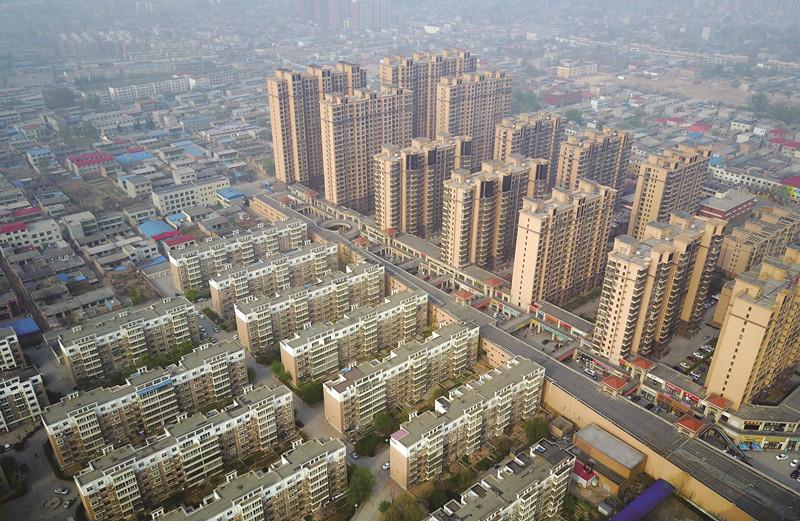But despite the enthusiasm and optimism of state media and mainstream economists, some experts remain suspicious of the project.
While some who are questioning Xiongan’s “green city” prospects point to the fact that Hebei itself is one of the most polluted provinces in China, and that Baiyangdian Lake in the new area has been subject to industrial run-off and drought, others question the feasibility of the project as a whole, pointing to the meager success, if not failure, of similar (yet smaller-scale) projects previously launched to relocate Beijing’s industry, such as Tianjin’s Binhai New Area and Hebei’s coastal Caofeidian area.
But most of all, critics of the project argue that the project’s top-down planning and the massive government-led reallocation of resources runs counter to market rules.
In an article published by the Chinese-language edition of the Financial Times, Sheng Hong, Director of the Unirule Institute of Economics, a Beijing-based non-governmental think tank, argued Beijing’s “over-population” and its various “urban ills” result from excessive government intervention in resource distribution in favor of Beijing with its capital status.
Sheng said that given the central government’s heavy presence in resource distribution, it becomes essential for China’s powerful state-owned companies to have their headquarters stationed in Beijing. The result is that Beijing enjoys a disproportionately high tax revenue from these companies. In addition to other public facilities financed by the revenue of central government, Beijing has become a magnet that attracts capital and talent at the expense of other northern cities.
Sheng stressed that such a problem can only be solved by reducing the government’s role in the distribution of resources, not by arbitrarily creating the Xiongan New Area. Sheng further argued that it is unlikely that Xiongan will replicate the successes of Shenzhen and Shanghai’s Pudong New Area, as these are located on the Pearl River Delta and the Yangtze River Delta respectively, and are supported by vibrant economic and trading activities in nearby trade hubs: Hong Kong for Shenzhen, Shanghai for Pudong.
“Compared to Shanghai and Shenzhen, Xiongan is far away from a major trading hub, and lacks the fundamental driving force to attract both manufacturing and service industry,” said Sheng.
But advocates of the Xiongan project argue that Beijing’s “urban ills,” which are shared by other Chinese cities to lesser degrees, result from the lack of government regulation and urban planning. They argue the location of the Xiongan New Area, where there is minimal existing urban development, can ensure the maximization of the beneficial effects of urban planning.
In addition, supporters of the project argue that the scope of the Xiongan project goes beyond economics alone, and has important political and strategic significances, which cannot be addressed by the market alone.
Wu Hequan, an academician of the Chinese Academy of Engineering who serves as deputy head of a committee of expert consultants on Beijing-Tianjin-Hebei coordination, believes that besides solving Beijing’s urban problems, the Xiongan project also needs to explore an alternative development model.
Wu argued that with strong support from the central government, the development of Xiongan provides a chance to conduct institutional innovation and reforms, which would be impossible otherwise. For example, to relocate commercial enterprises and other organizations and to attract Beijing residents to move to Xiongan, would require some major reforms to the existing household registration system that ties social services to a certain locality and, up to now, each person to a locality. If such reforms prove to be successful in Xiongan, they could be replicated elsewhere and have major national significance.
Xiongan also affords the government a chance to explore a new path in managing the property market, which would be of major significance as soaring property prices have increasingly become a major source of public grievance in China’s larger cities. Wu suggested that China could adopt the model of Singapore, where the government directly manages much of the land and builds public and low-rent housing for those in need.
For Yang Kaizhong of Peking University, another major strategic consideration for the government in launching the Xiongan project is to foster the formulation of a “capital economic circle” to balance the development disparity between China’s more prosperous southern region where Shanghai and Shenzhen are located, and the less developed northern and inland region.
But both Wu and Yang admitted that the eventual success of the Xiongan project will depend on a balanced approach of government and market. “While there are things the government can achieve with its administrative power, more need to be achieved by the market,” said Wu.
While experts are still debating the project’s feasibility, efforts to push forward the scheme are underway. Following the establishment of a preparatory committee for the Xiongan project staffed by officials from Beijing, Tianjin and Hebei, the National Development and Reform Commission, China’s top economic planner, announced on April 13 that the commission is drafting the development plan for the first phase of construction in Xiongan and plans for protection of the environment around Baiyangdian Lake, which will be financed by the central government.
According to an estimate made by investment bank Morgan Stanley, the Xiongan project will require an investment of 2.4 trillion yuan (US$348 billion) over the next 10 to 20 years. Regardless of its eventual fate, the project will be a major focus for China watchers for years to come.

 Old Version
Old Version